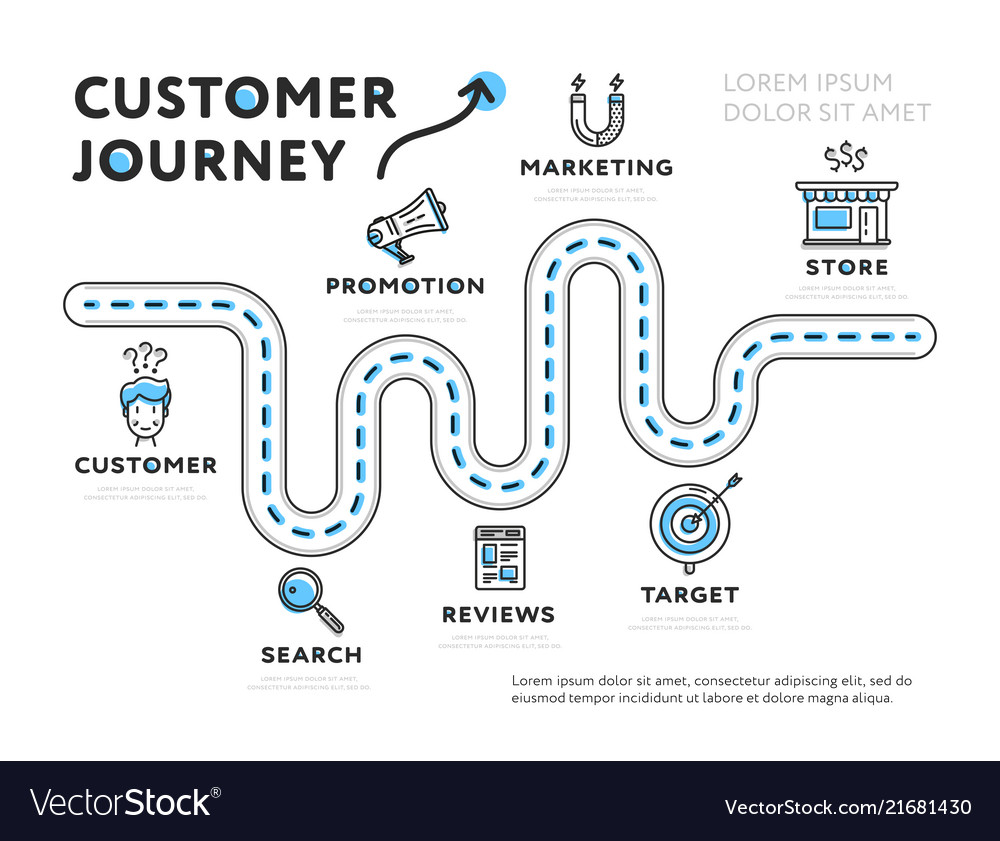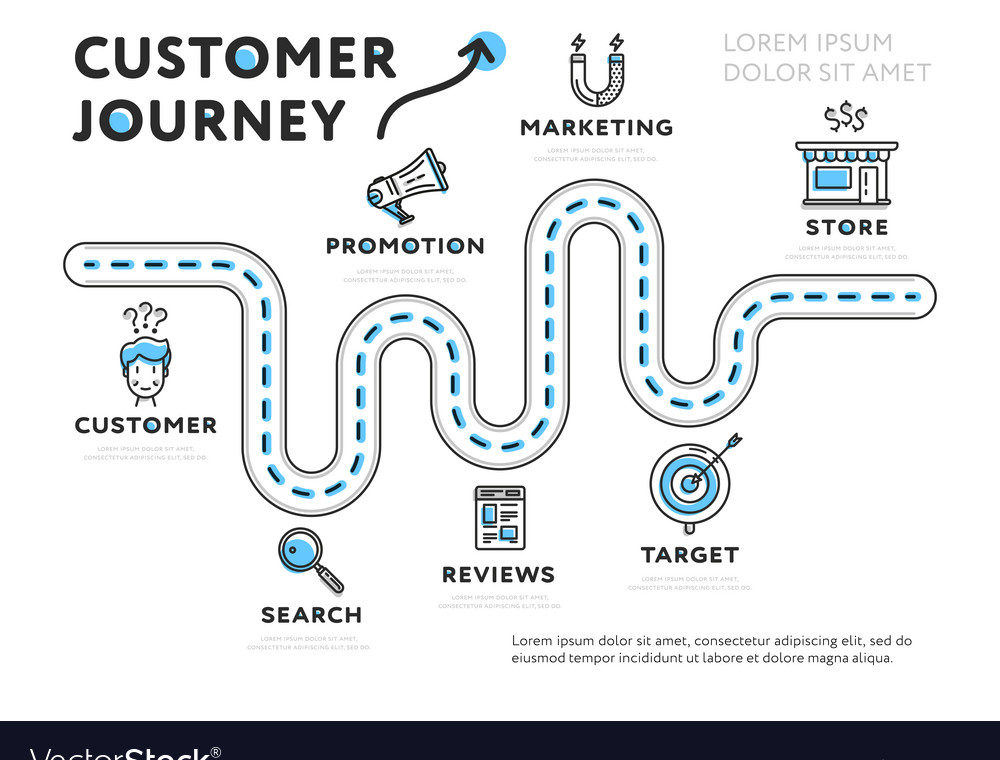
Serving your consumers the correct message in the right context at the right time is the key to effective communication as they develop a relationship with your business. Users are more likely to convert if a message’s tone, type, and frequency are appropriate for the situation and setting they are in. User journey mapping can help with it.
Omnichannel customer journey mapping is a crucial tool for you to comprehend and address your customers’ demands throughout all of your brand’s communications touchpoints in order to lead them toward the intended goal. Consumer journey maps, which specify the events, motives, and friction points in the customer’s product experience, help you to visualise how a customer interacts with your business.
By defining customer journeys, you can improve your messaging approach and reach your customers with the appropriate message on the appropriate medium at the appropriate time.
An overview of the customer journey
A visual representation of your consumer’s whole interaction with your brand is the customer, buyer, or user journey. A customer journey maps the major interactions your customers have with your business over a variety of channels and over the course of their lifetimes.
recognising the multichannel customer journey
A client’s interactions with your company via a number of different channels, such as push notifications, SMS, emails, in-app messaging, and web notifications, are included in an omnichannel customer journey map. An omnichannel marketing strategy unifies communication across all client touchpoints and sees each channel contact as a part of one bigger conversation, in contrast to multichannel messaging, which can be fragmented for both the customer and the marketer. This strategy aims to develop a more dynamic, individual, and cohesive customer journey.
In addition to location, in-app behaviours, conversion kinds, and other triggers, these specific interactions can also involve channel behaviour, buying behaviour, and other triggers.
Making a Customer Journey Map: Steps
- Establish Your Goal
What is the purpose of your journey optimization? What specific action do you want your client to take? What is the ROI you want to increase? Before you can specify the intermediary stages clients take on their way to making a purchase, you must first describe your endpoint.
A purchase, a subscription renewal, or a certain engagement milestone, such as completing Level 8 in your mobile game, could be the desired action you map to. You can decide to focus on a specific aspect of the customer experience, such as successful onboarding, or map the entire high-level customer journey. Eventually, your approach should broaden to incorporate a number of journeys that you define in accordance with the information you now have about your consumers.
- Gather Your Data.
You should centralise and make use of the consumer data you’ve gathered internally and throughout your IT stack before mapping your customers’ journeys. In this process, you can use both quantitative and qualitative data sources, such as your analytics, CDP, and CMS providers, as well as interviews, surveys, and task assessments.
Your data provide the building blocks for a successful journey map. To create strong customer profiles tailored to the audiences who matter most, you should take the time to gather and analyse this data.
- List important user groups
You should first determine how various audiences interact with your product or service in order to create personas that reflect those interactions while trying to comprehend a customer’s path through your brand’s message touchpoints. Because different user groups will take different detours on their way to making a purchase, it is important to map out multiple paths to get the most outcomes from your marketing efforts.
If you notice, for instance, that Millennial clients are more likely to find your brand through social media and convert through promotions provided by SMS, whereas Baby Boomers are more likely to find you through organic search and convert after clicking on your company’s emails. Based on these observations, you could develop two buyer personas and sketch out two unique journeys that describe the moments at which each persona interacts with your business. As you chart the processes people take to reach the conversion you’ve defined, take into account their unique motivations, habits, pain spots, and channel preferences.
- Create a touchpoints map
It’s time to put everything together and design your user journey based on the information you’ve acquired. Bring all of your information together, and then use the important touchpoints you’ve determined for each user persona to fill up your timeline. Keep in mind that your journey’s touchpoints are its foundation. They are touchpoints customers have with your brand on any channel as they move closer to the desired outcome.
Think about the interactions—positive, negative, and neutral—that a customer has with your brand through each of the channels you offer, and how smoothly or imperfectly they connect the customer experience.
Using your food delivery service, below is an example of an omnichannel customer journey a consumer would go through to make an order:
Customer instals a meal delivery app as a first touchpoint
Touchpoint 2: A customer looks through the app’s selection of nearby burger joints.
Touchpoint 3: A retargeting email promoting a free delivery promotion at a nearby burger business is sent to the customer.
Point 4: The customer places an order using the app
Touchpoint 5: The client gets push notifications about their orders
Touchpoint 6: The client gets their order
- Adaptive Optimization
Your customers’ journeys will change as your product experience and the digital marketing ecosystem do. As you continue, be prepared to (metaphorically) burn previous customer journey maps and edit, add to, and even expand upon them. All of this is necessary to comprehend your erratic human clients and their always shifting wants. As you get ready to do testing to confirm your hypotheses along the route, keep in mind to maximise the return on investment.
Start using Mok.one
Mok.one is made to assist you in managing alerts and user communication across all channels, including email, in-app chat, bulk SMS, and push notifications for mobile devices and the web.
With the help of our Journeys Builder tool, cross-channel message sequences that are based on in-the-moment user engagement can be easily created. Our platform is simple to set up, and without having to do any technical work, it is simple to automate and modify messages. Create your first Journey right away if you don’t already have a Mok.one account—free! it’s
